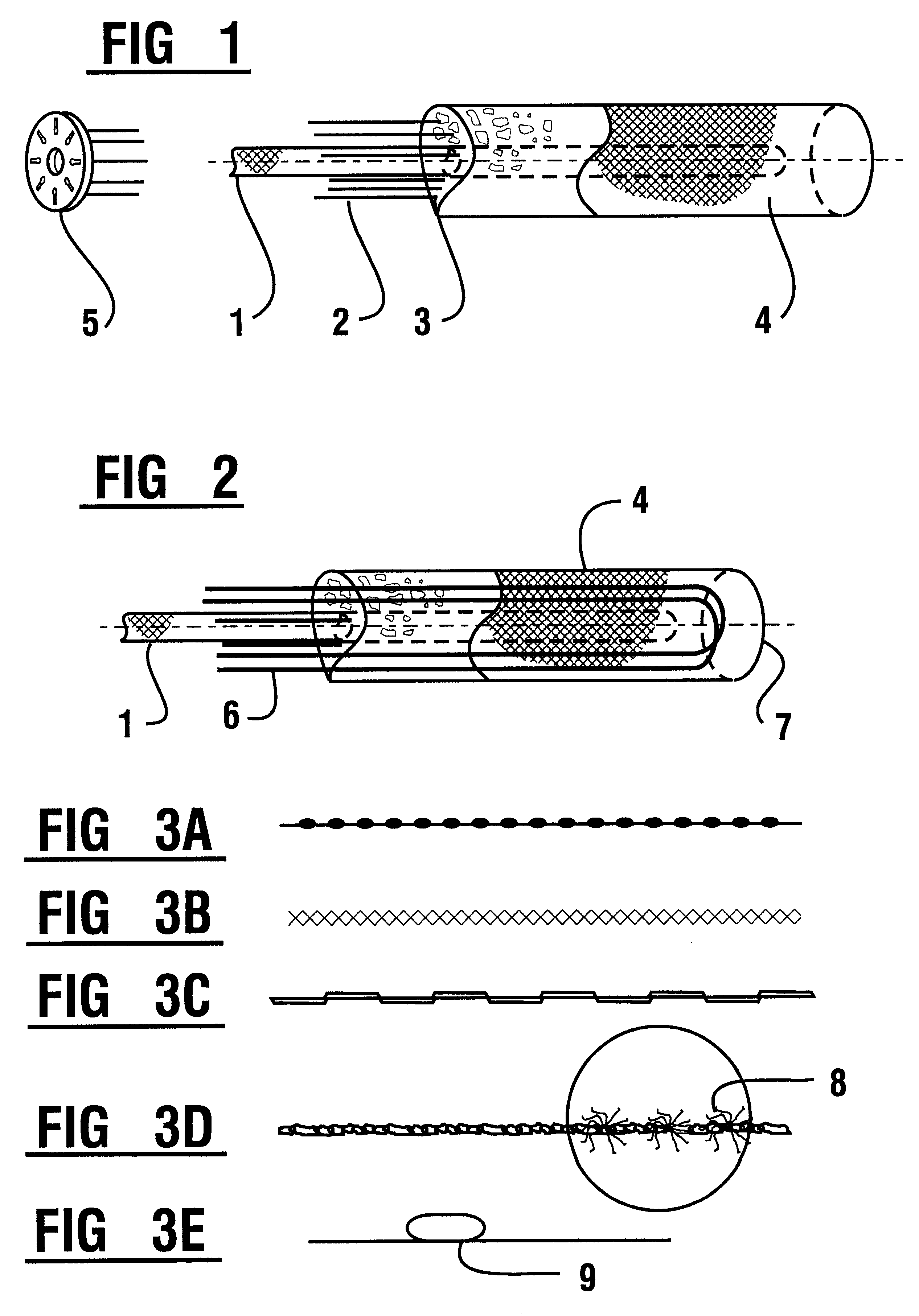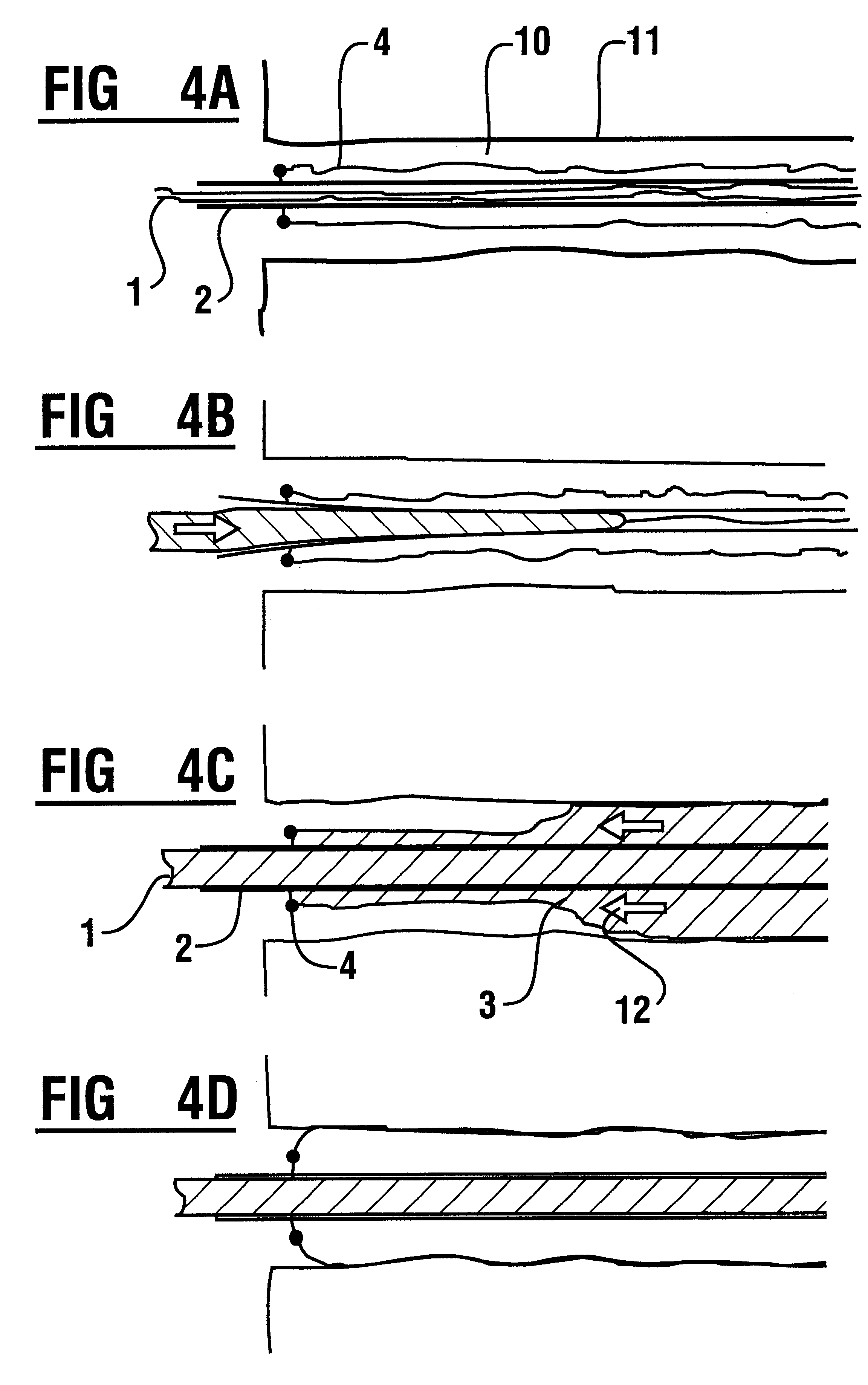Injection anchor
a technology of injection or grouting and anchors, which is applied in the direction of engine lubrication, foundation repair, etc., can solve the problems of significant production problems, inability to mass production, and inconvenient assembly of prior art injection or grouting anchors. , to achieve the effect of convenient assembly
- Summary
- Abstract
- Description
- Claims
- Application Information
AI Technical Summary
Benefits of technology
Problems solved by technology
Method used
Image
Examples
Embodiment Construction
FIG. 1 shows in perspective an exploded view of an injection body as proposed in the filled state. The inner deformable structure which in the embodiment shown comprises fabric tube 1 is surrounded by reinforcing elements 2, which can comprise rods, wires, pipes or ridged sheet metal or other suitable elements. Reinforcing elements 2 in the present embodiment example comprise rods or bars, each of which is slightly shorter than the integral length of the injection body or can comprise partial pieces that are not indicated in greater detail. The length and cross section of the reinforcing elements 2 are determined at the construction site on the basis of the data available. Next, the assembled injection body is also installed. An additional fabric tube 4 or similar structure, which is closed at the foot-end of the injection body, surrounds the entire body. The inner fabric tube is correspondingly shorter, so that mortar 3 which has been introduced via the inner fabric tube, exits the...
PUM
 Login to View More
Login to View More Abstract
Description
Claims
Application Information
 Login to View More
Login to View More - R&D
- Intellectual Property
- Life Sciences
- Materials
- Tech Scout
- Unparalleled Data Quality
- Higher Quality Content
- 60% Fewer Hallucinations
Browse by: Latest US Patents, China's latest patents, Technical Efficacy Thesaurus, Application Domain, Technology Topic, Popular Technical Reports.
© 2025 PatSnap. All rights reserved.Legal|Privacy policy|Modern Slavery Act Transparency Statement|Sitemap|About US| Contact US: help@patsnap.com



